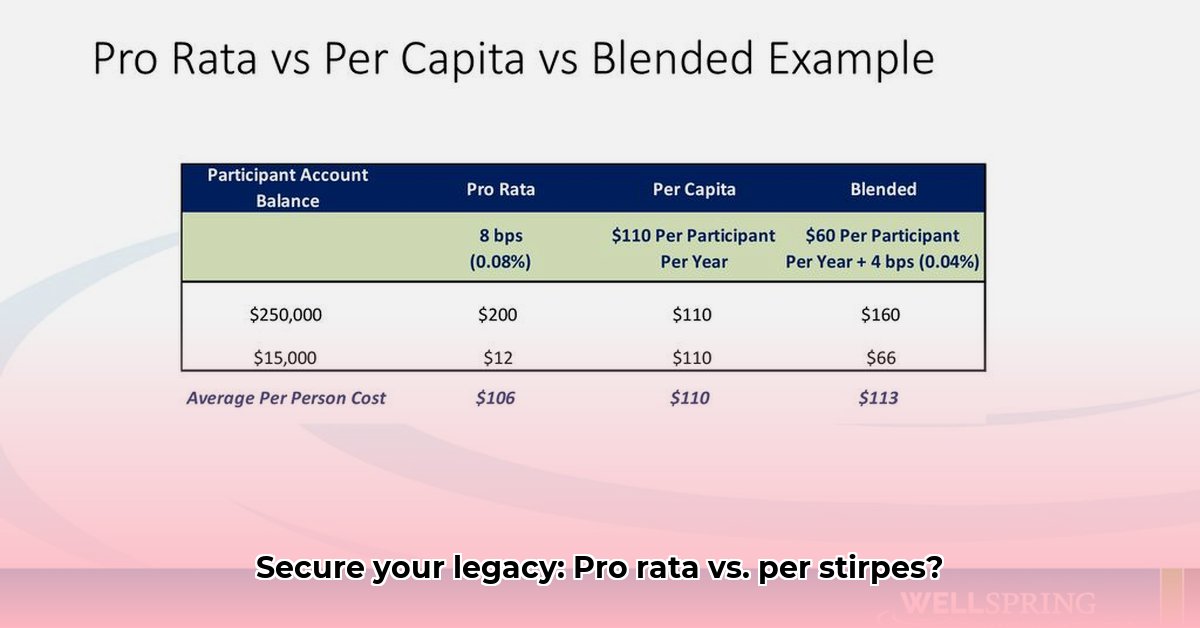
Understanding Inheritance Distribution: Pro Rata vs. Per Stirpes
Planning for the future distribution of your assets is a crucial part of estate planning. Two common methods for dividing inheritance are pro rata and per stirpes. While both aim to distribute your estate, they differ significantly in how they handle situations where a beneficiary predeceases you. Understanding these differences is key to ensuring your wishes are carried out accurately. For more complex scenarios involving multiple beneficiaries, you might find it helpful to learn about beneficiary types.
What is Pro Rata Distribution?
Pro rata distribution, meaning "in proportion," divides your estate among your surviving beneficiaries based on their initial shares. Let's say you leave your estate to three children. Each receives a one-third share. If one child dies before you, their one-third isn't passed to their children; it's instead redistributed equally among the surviving children. This results in a shifting of shares among those who survive.
Example: You leave $100,000 to three children. If one child dies before you, the remaining two each inherit $50,000. Their share increases proportionally.
What is Per Stirpes Distribution?
Per stirpes distribution, meaning "by the head" or "by representation," aims for a more consistent division based on family lines. It divides the estate among the first generation of heirs; if one heir predeceases you, their share is passed on to their descendants (children, grandchildren, etc.).
Example: Using the same $100,000 estate left to three children, if one child dies before you, their one-third ($33,333) is divided equally among their children (if any). The other two children still receive their original one-third shares.
Pro Rata vs. Per Stirpes: A Side-by-Side Comparison
Here's a table summarizing the key differences:
| Feature | Pro Rata | Per Stirpes |
|---|---|---|
| Initial Division | Equal or unequal shares, as specified | Typically equal shares |
| Deceased Beneficiary | Share redistributed to surviving beneficiaries | Share passes to the deceased's heirs |
| Proportion Change | Yes, proportions adjust if a beneficiary dies before you | No, initial proportions remain unchanged |
| Complexity | Relatively simpler | Can be more complex, especially with large families |
| Typical Use | Smaller families; simpler estates | Larger families; more complex estates |
Choosing the Right Method for Your Estate
The best method depends on several factors:
Family Structure: Pro rata suits smaller, simpler families. Per stirpes provides a more structured approach for larger families, ensuring all branches inherit as intended.
Your Wishes: If you want a strict equal division amongst surviving beneficiaries, pro rata is clear. If you want to ensure every branch of your family receives its proportional share, per stirpes offers that certainty.
Potential Disputes: Per stirpes offers a more defined structure, potentially minimizing future family disputes.
Is there a specific scenario where one method is clearly superior? Yes. Consider a large family with multiple deceased beneficiaries. Per stirpes offers a clearer path to ensure all descendants inherit their respective shares.
Practical Steps to Secure Your Legacy
Consult an Estate Attorney: An attorney can explain the nuances, help you choose the best distribution method, and ensure your will accurately reflects your wishes. This ensures compliance with local laws.
Regularly Review Your Will: Life circumstances change; your will should reflect those changes. Periodic review helps ensure your estate plan remains current and accurate.
Communicate with Beneficiaries: While potentially sensitive, discussing your estate plan with beneficiaries can avoid future misunderstandings and conflicts.
Explore Other Estate Planning Tools: Trusts offer additional flexibility in distribution compared to wills. An attorney can assess if trusts are suitable for your situation.
Choosing between pro rata and per stirpes involves careful planning and consideration. By understanding the differences, consulting with legal professionals, and engaging in open communication with your family, you can create an estate plan that works best for your needs, ensuring your legacy is protected.